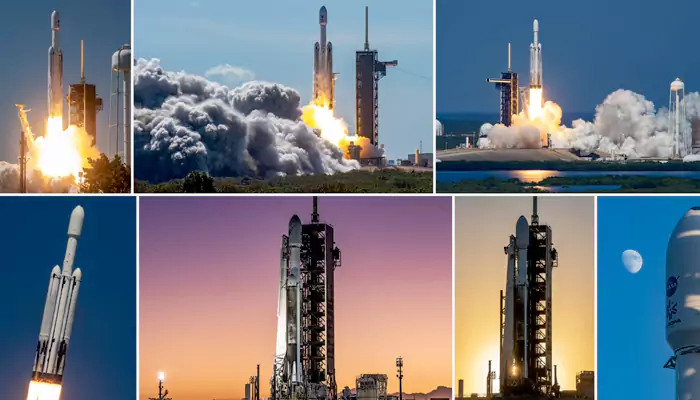Satellite Launches Spark New Environmental Concerns: Will SpaceX’s Eco-Friendly Solutions Make a Difference?
- Soham Halder
- 1 year ago
- 4 minutes read

The participation of private spaceflight organizations from the middle of 20th and in ongoing 21st century have greatly impacted space exploration as well as commercialization of the space industry.
Rapid progress in science and technology have been the strongest pillar for the development of human civilization. With the advancement in technology, 21st century witnessed massive growth in space exploration. A prominent progress has also been noticed post 2020. As per recent reports, the number of objects launched in 2020, 2021, 2022, and 2023 are 1274, 1810, 2474, and 2664 respectively. With rising space exploration, increasing environmental pollution has also been detected. In this article, we will discuss about the current trend, shocking prediction and probable eco-friendly solutions.

(Credit - X/@EuropaClipper)
Pollution from Rocket Launch - Next Big Threat:
Modern rockets use fossil fuels, which may raise Earth's upper atmospheric temperature. More satellite burning is promoting aluminium oxide levels, which can gradually upset the planet's thermal balance. Soot created during fossil fuel consumption for rocket launch along with aluminium oxides can destroy ozone, which protect us from harmful ultraviolet light.
As per recent study published in Geophysical Research Letters, “aluminium oxide concentrations in the mesosphere, stratosphere, and troposphere's lowest layers may grow by 650 percent in the coming decades, depleting ozone”.
Incredible footage of Space debris entering Earth. pic.twitter.com/cyK9AbgmN4
— Curiosity (@MAstronomers) May 16, 2024
(Credit - X/@MAstronomers)
The issue is not limited to rocket launch only. Satellite reentry into earth atmosphere is another huge contributor of pollution. It produces metallic ash in the stratosphere, capable of weakening Earth's magnetic field. Consequently, cosmic radiation can reach Earth promoting various diseases.
Munkwan Kim, an associate professor of astronautics at the University of Southampton recently told that “if we don’t take any action now or in the next five years, it might be too late.”
The amount of space debris including old satellites falling back to Earth has doubled since the last decade. “A few hundred tons of old space junk now vaporizes in the atmosphere every year,” an expert mentioned recently.
According to the International Telecommunications Union report, “satellite spectrum applications have exceeded 1 million,” however, this might be only the start.
Space debris orbiting Earth
— Steve Stewart-Williams (@SteveStuWill) November 22, 2021
Credit: Technical University Braunschweig pic.twitter.com/0dmIrEIF9K
(Credit - X/@SteveStuWill)
Eco-friendly Ways to Mitigate Pollution:
This is not the first time that pollution caused by rocket launch has come into limelight. With the rise of space tourism, the risks are rapidly increasing. For a long time, scientists have been exploring ways to control it. Some effective solutions under research are replacing the fossil fuels, focusing on low-orbital satellite launch that consume less fuel, horizontal launch of rocket, and so on. Even, converting pollutants into non-harmful form is another option that scientists are considering.
Will SpaceX’s Innovation Come Handy?
SpaceX's Starship test flight achieved a remarkable breakthrough as the launch tower's "chopstick" arms, named "Mechazilla" catch the returning first-stage booster. The 233 feet tall (equivalent to 20 storey building) “super heavy booster” was blasted off attached to the Starship rocket and almost seven minutes later, made a picture-perfect controlled return to the same launch pad in Texas.
Thousands of distinct vehicle and pad criteria had to be met prior to catching the Super Heavy booster. Thanks to the tireless work of SpaceX engineers, we succeeded with catch on our first attempt. pic.twitter.com/6wa5v6xHI0
— SpaceX (@SpaceX) October 13, 2024
(Credit - X/@SpaceX)
The ‘Mechazilla’ (name suggested by Elon Musk) or the two large robotic arms attached to the launch tower gripped the descending rocket, as confirmed by SpaceX. This futuristic maneuver will be key milestone in rapid rocket reusability. This might also reduce the pollution level.
Reusable rocket booster can surely reduce space debris and fuel usage, the key contributors of pollution. However, this cost-effective launch and landing technologies need more tests before commercial use.












